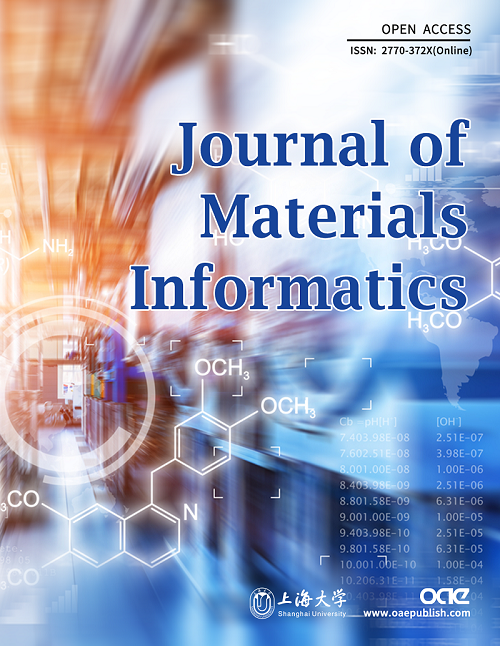Contents
Host
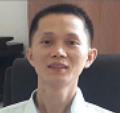
Prof. Li-Ming Yang
School of Chemistry and Chemical Engineering, Huazhong University of Science & Technology, Wuhan, Hubei, China.
Speaker

Prof. Artem R. Oganov
Skolkovo Institute of Science and Technology, Moscow, Russia.
Artem R. Oganov FRSC MAE is a Full Professor at Skolkovo Institute of Science and Technology (Moscow, Russia). He received his Master of Science degree in Crystallography and Crystal Chemistry in 1997 at Moscow State University under the supervision of Academician Vadim S. Urusov. In 1998 he moved to the U.K. where in 2002 he received a PhD in Crystallography at University College London. During his PhD and subsequent postdoctoral research he worked with Prof. G. David Price. In 2003 he became a senior researcher and group leader at ETH Zurich, where he obtained Habilitation in Crystallography and Mineralogy in 2007. In 2008 he moved to Stony Brook University (USA) as Associate Professor, in 2010 promoted to Full Professor. Since 2015 he is a Full Professor of Skolkovo Institute of Science and Technology (and, since 2020, of MISIS University, where since 2021 he is a Head of Department of Semiconductors and Dielectrics).
His main research interests include:
-crystal structure prediction and computational materials discovery. In these fields, he has developed methods enabling the prediction of new materials with target properties, new compounds (including exotic substances at high pressures), and new stable and metastable crystal structures. In particular, his works deal with superhard, superconducting, thermoelectric and other classes of materials. His USPEX code (http://uspex-team.org) has >8500 registered users, including several companies.
-high-pressure chemistry. At high pressures, chemical behavior of the elements is different from their normal chemistry. Completely unexpected compounds and crystal structures appear, and many of them have exciting properties (including record high-temperature superconductivity). Such research has important geophysical and geochemical implications, as most planetary matter exists at high pressures. His theoretical predictions are often combined with experiments.
His research is now expanding into prediction of the structure of nanoparticles, 2D-materials, proteins. He has >300 publications and five patents. He has received a number of awards, including the 2007 Research Excellence medal (from European Mineralogical Union), 2012 "1000 talents professor" award (from Chinese government), the 2017 George Gamow award (RASA-USA), and the 2019 Friendship award – the highest award given by Chinese government to foreign experts. In 2013 he was elected Fellow of the Mineralogical Society of America, in 2020 – Fellow of the Royal Society of Chemistry (FRSC) and Fellow of American Physical Society. In 2015 he was elected Professor of Russian Academy of Sciences, and in 2017 – member of Academia Europaea. In 2011 he founded the Commission on Crystallography of Materials at the International Union of Crystallography (IUCr) and was its chair in 2011-2017 and consultant since 2017. He is a 2022 Highly Cited Researcher (Clarivate Analytics).
His main research interests include:
-crystal structure prediction and computational materials discovery. In these fields, he has developed methods enabling the prediction of new materials with target properties, new compounds (including exotic substances at high pressures), and new stable and metastable crystal structures. In particular, his works deal with superhard, superconducting, thermoelectric and other classes of materials. His USPEX code (http://uspex-team.org) has >8500 registered users, including several companies.
-high-pressure chemistry. At high pressures, chemical behavior of the elements is different from their normal chemistry. Completely unexpected compounds and crystal structures appear, and many of them have exciting properties (including record high-temperature superconductivity). Such research has important geophysical and geochemical implications, as most planetary matter exists at high pressures. His theoretical predictions are often combined with experiments.
His research is now expanding into prediction of the structure of nanoparticles, 2D-materials, proteins. He has >300 publications and five patents. He has received a number of awards, including the 2007 Research Excellence medal (from European Mineralogical Union), 2012 "1000 talents professor" award (from Chinese government), the 2017 George Gamow award (RASA-USA), and the 2019 Friendship award – the highest award given by Chinese government to foreign experts. In 2013 he was elected Fellow of the Mineralogical Society of America, in 2020 – Fellow of the Royal Society of Chemistry (FRSC) and Fellow of American Physical Society. In 2015 he was elected Professor of Russian Academy of Sciences, and in 2017 – member of Academia Europaea. In 2011 he founded the Commission on Crystallography of Materials at the International Union of Crystallography (IUCr) and was its chair in 2011-2017 and consultant since 2017. He is a 2022 Highly Cited Researcher (Clarivate Analytics).
Abstract
Until mid-2000s it was thought that crystal structures are fundamentally unpredictable. This has changed, and a special role in this transformation was played by our evolutionary method USPEX. Thus method can be viewed as a type of artificial intelligence, and routinely allows one to predict stable crystal structures for a given chemical composition], predict all stable compounds formed by given elements and even predict among all possible compounds the structure and composition that have desired combination of properties. Here I will discuss:
1. Discovery of novel chemical phenomena at high pressure: transparent non-metallic allotrope of sodium, counterintuitive novel sodium chlorides, chemical reactivity of helium, prediction, and discovery of new high-temperature superconducting polyhydrides, approaching room-temperature superconductivity.
2. Recent extension of crystal structure prediction to finite temperature, and first results for planet-forming materials.
3. Development of coevolutionary methods – COPEX (to predict all stable compounds in very complex systems) and Mendelevian search (navigating the chemical space to find the material with desired properties).
1. Discovery of novel chemical phenomena at high pressure: transparent non-metallic allotrope of sodium, counterintuitive novel sodium chlorides, chemical reactivity of helium, prediction, and discovery of new high-temperature superconducting polyhydrides, approaching room-temperature superconductivity.
2. Recent extension of crystal structure prediction to finite temperature, and first results for planet-forming materials.
3. Development of coevolutionary methods – COPEX (to predict all stable compounds in very complex systems) and Mendelevian search (navigating the chemical space to find the material with desired properties).
Presentation
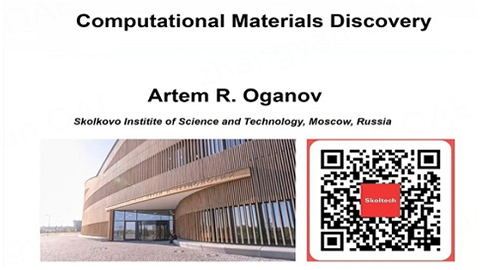
Prof. Artem R. Oganov
Topic: Computational Materials Discovery
NaN
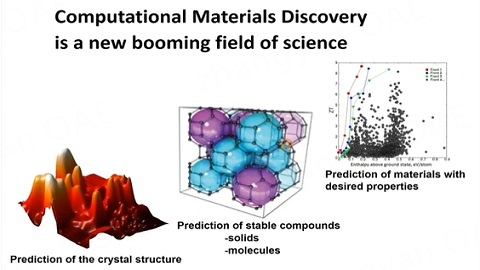
Topic: Free discussion
NaN
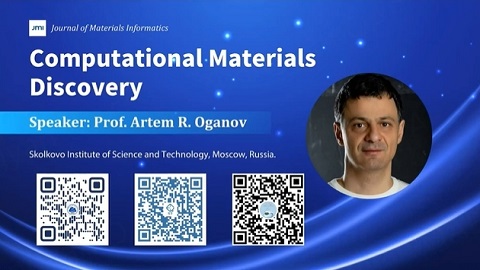
Topic: JMI introduction
NaN



